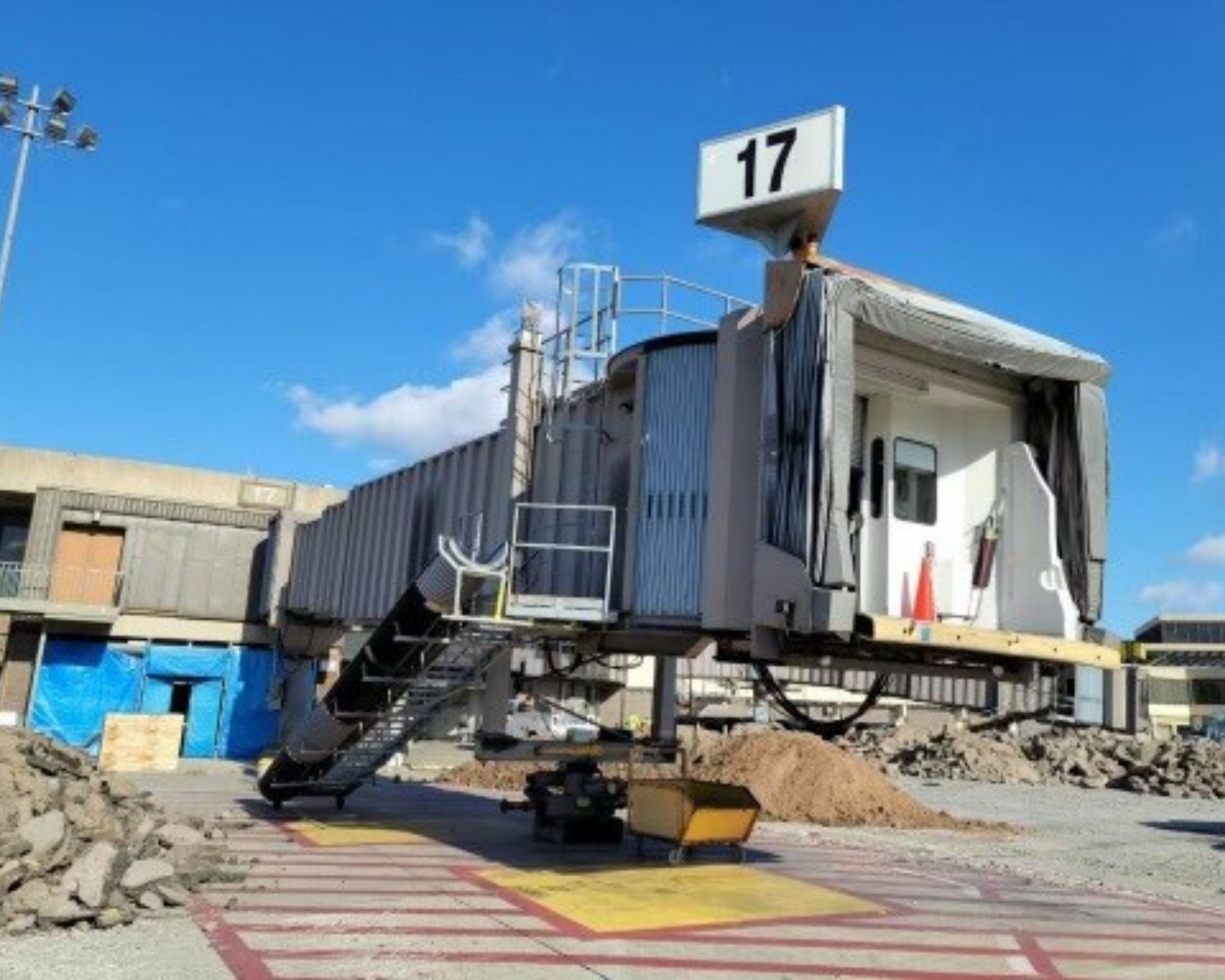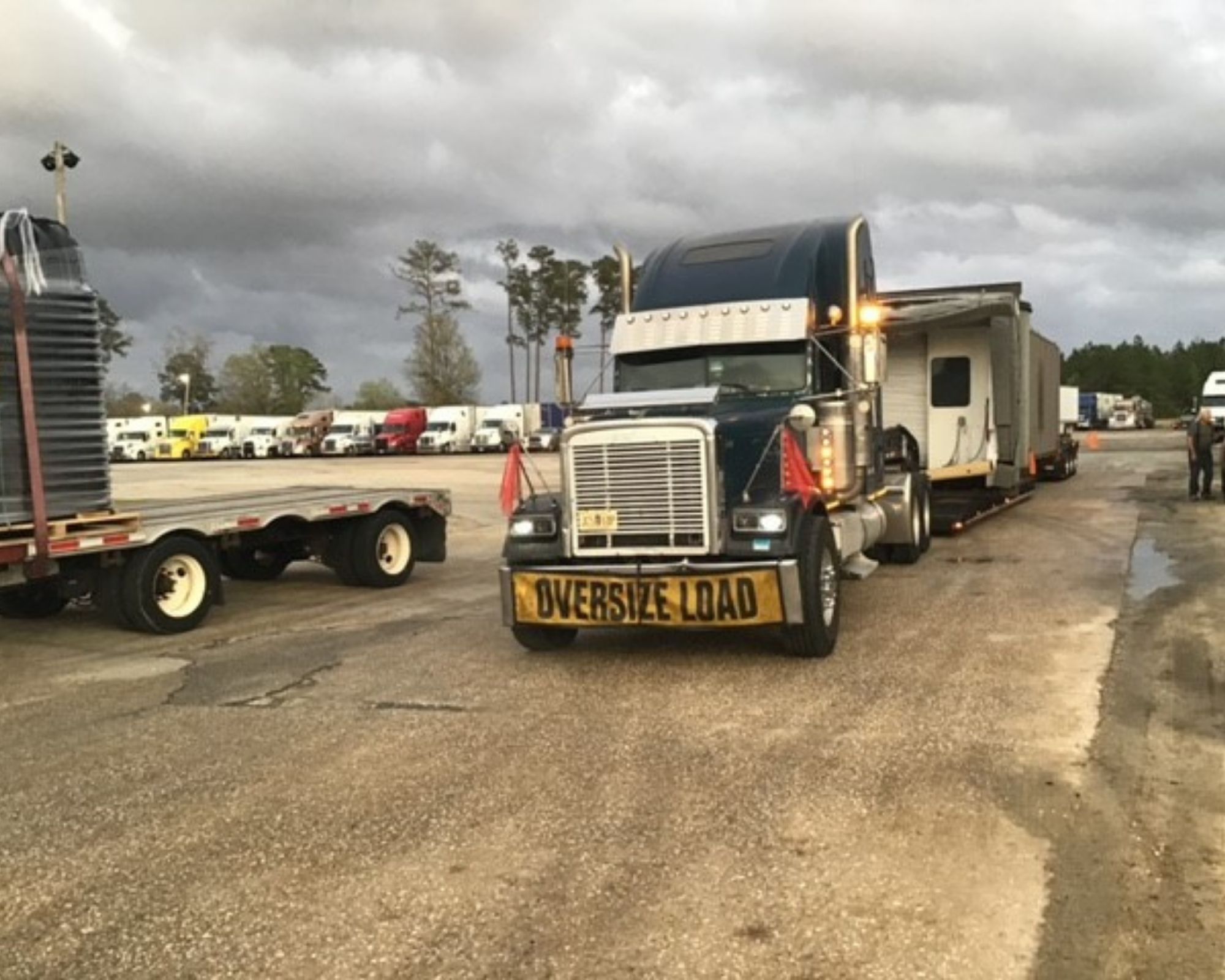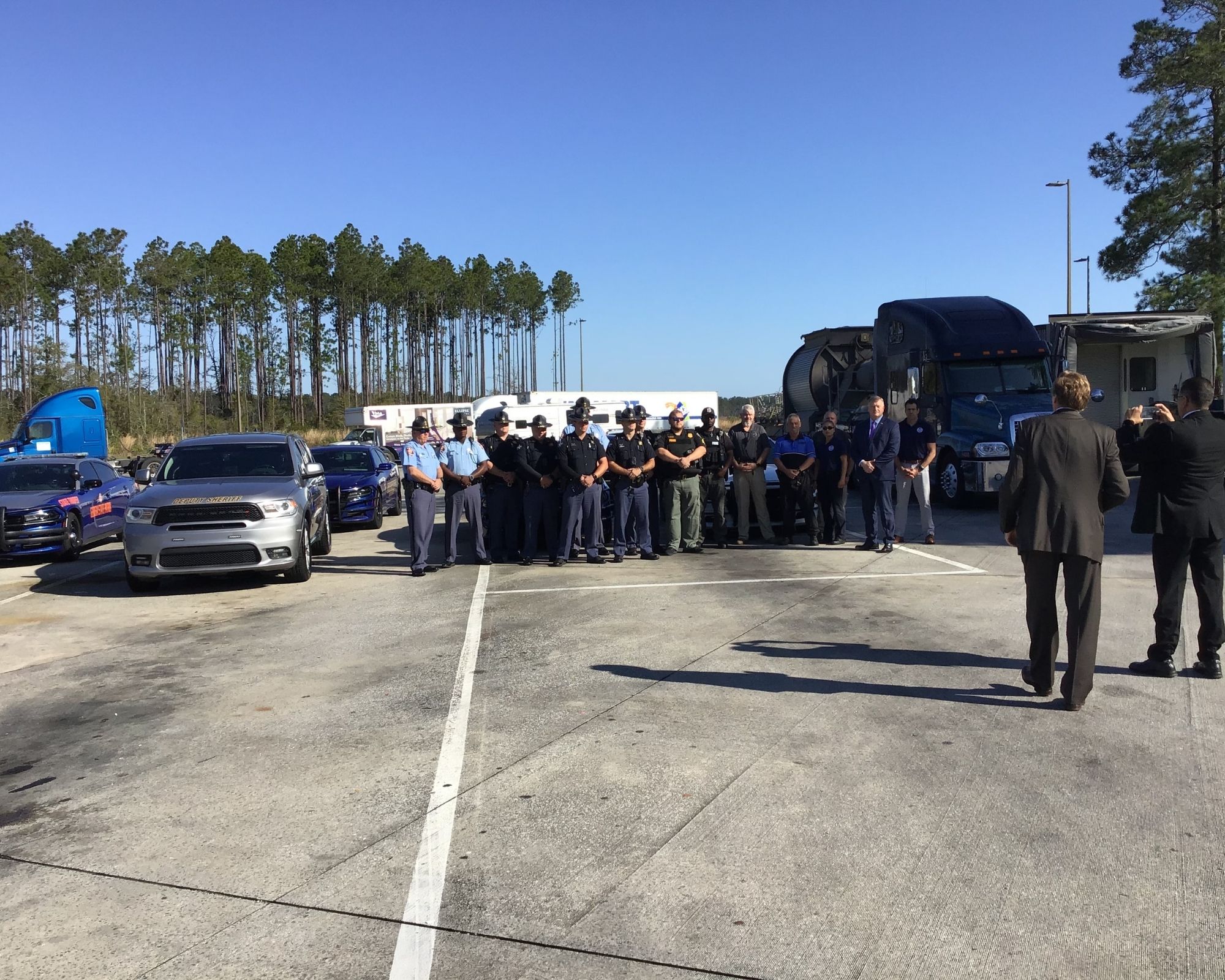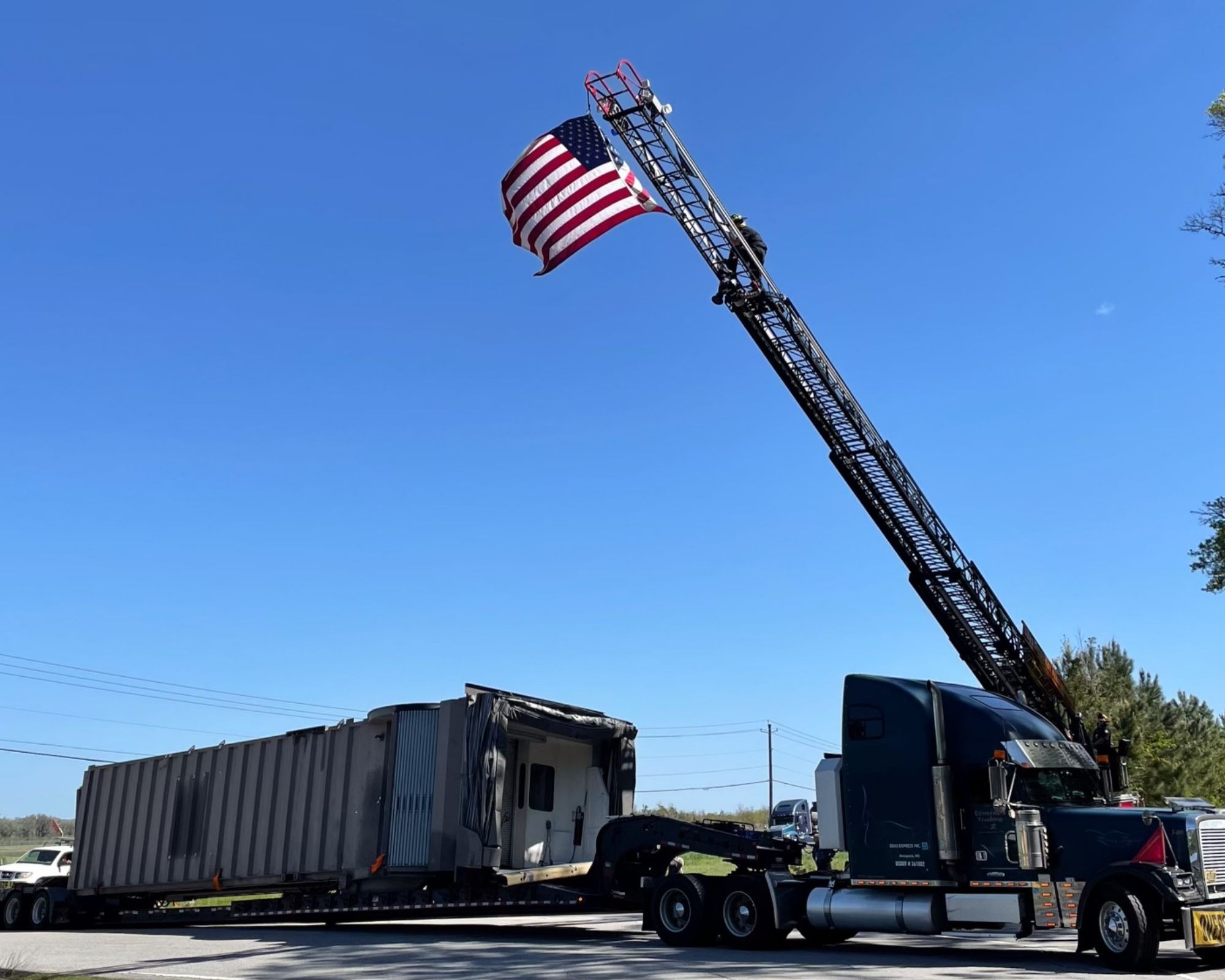Preserving History: The Flight 93 Gateway
Preserving History: The Flight 93 Gateway
- April 8, 2022
Driving down the stretch of highway from New Jersey to Georgia between March 22 and 25, one may have seen an unusual sight: hints of a gargantuan enclosed walking bridge or passenger gateway. This unusual artifact — commonly used to board airline flights — was being transported on an equally massive truck while escorted by police vehicles from Virginia, North Carolina, South Carolina, and Georgia. The precious cargo — officially known as Jetway 17 — had been the last stretch between ground and aircraft tread by passengers and crew of United Flight 93 when boarding the ill-fated Boeing 757 at its Newark International Airport departure date on September 11, 2001. It was now en route to its new home at the Federal Law Enforcement Training Center (FLETC) in Glynco, GA.
Over the past two months, preserving Jetway 17 had been the focus of a group of historians, museum curators, advocates, law enforcement agencies, fire department veterans, and others. A resonant piece of history from that awful morning, the gateway also serves as a reminder of the strength and courage of the passengers and crew members who made the ultimate sacrifice to save the lives of others, and potentially avert another strike in the nation’s capitol. But sorting out the logistics of removing, transporting, and housing the 85-foot structure was no small feat.
“We reached out to everybody we could to find this historical object an appropriate home,” said Sam Young, Unit Chief, Terrorist Screening Center (TSC). “Law enforcement agencies, museums, any organization that could help us preserve and house this. We even considered breaking it up and sending portions of it to different places.”
Eventually FLETC, with its mission to “…safeguard the American people, our homeland, and institutions,” emerged as a fitting choice to house this symbol of American bravery and collective action. Making the choice more poignant is the fact that FLETC-trained officer Special Agent Richard J. Guadagno, who grew up in New Jersey, was one of the passengers killed on Flight 93.
On the morning of 9/11, 44 passengers and crew walked through Jetway 17 to board transcontinental Flight 93, headed to San Francisco. At the time, there was no indication that anything was amiss. Forty-six minutes after takeoff, terrorists stormed the cockpit and hijacked the plane, seemingly intending to crash it into the U.S. Capitol Building in Washington, DC. They were unsuccessful as passengers and crew overtook them and attempted to take back control of the plane. It eventually crashed in a field in Shanksville, PA, killing everyone on board.
“The heroes on board Flight 93 took their last steps on earth through this gateway,” said Young. “For anyone working in law enforcement or counterterrorism, it is a reminder of the reason we work so hard and why we do what we do. It motivates us to do our jobs to the very best of our abilities because of what’s at stake.”
By 9/11 Memorial Staff
Previous Post
Women’s History: Paying Tribute Through Design

Meet native New Yorker Freida Rothman, who honors 9/11 — and the strong women in her life — through iconic jewelry designs.
Next Post
Arab-American History: A Book of Eid Stamps With a Deeper Meaning

With an eye on Arab-American History Month, we're sharing the story of Aziz Ahsan, whose quick errand on the morning of attacks was ultimately woven into the fabric of the 9/11 narrative and came to symbolize the spirit of unity that helped us all through.



